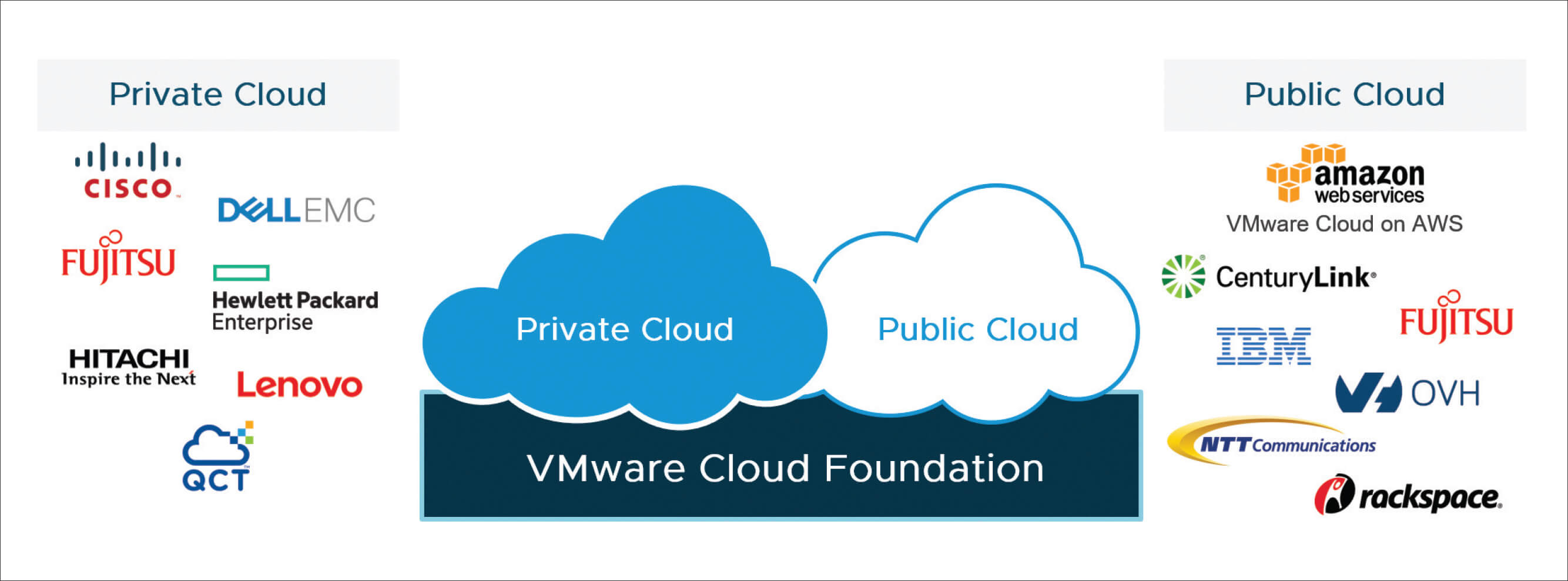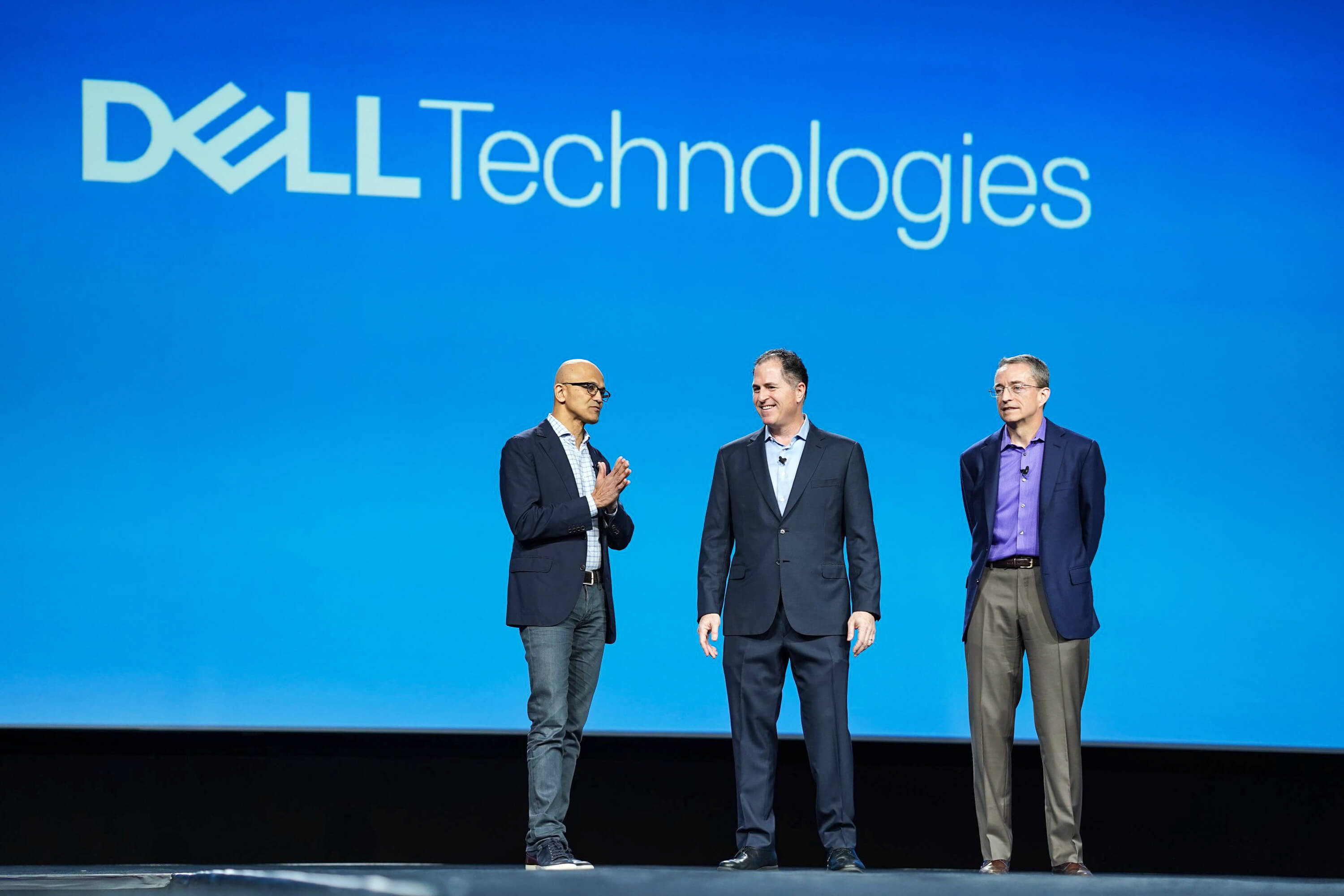The big picture: Everyone knows that cloud computing has been the most important development in the enterprise IT world for many years now, but what isn't as well-known is that the move to the cloud hasn't been as fast as many predicted. In fact, I've seen estimates that suggest only 20% of the applications and workloads running in businesses today have any connection to the cloud. What that means, of course, is that the vast majority of them still run locally in companies' own data centers.
The relevance of this metric really hit home this week at the Dell Technologies World event, on several different fronts. First, on a practical level, the company made a number of announcements related to cloud-focused offerings---collectively called Dell Technologies Cloud Platform---that are targeted at companies who are still working on making the transition to the cloud. Beyond the product specifics, though, what's really interesting to think about is how strongly this validates the strategy that Michael Dell and team embarked on over 5 years ago as they started to plot out the purchase of EMC/VMWare, as well as other companies that are now part of the Dell Technologies portfolio.
Remember that many industry observers and financial analysts thought the move was very wrong-headed and essentially doomed the company to the dustbins of tech industry history because it appeared to be looking backwards instead of forward. Why worry about the data center, or even private clouds, went the argument, when everything is headed to the public cloud? Oh, how times have changed.
While no one will argue that the path from the initial plans to unite the two established, arguably legacy-focused, vendors went perfectly smoothly between then and now, there is little question that the fundamental thinking behind the deal proved to be right on. It's very clear now that private clouds, which leverage a company's existing data center infrastructure, along with hybrid clouds, which integrate elements of both private clouds and the public cloud offerings such as Amazon's AWS, Microsoft's Azure, and Google's Cloud Platform, are here to stay. They are not just intermediary steps on the journey to the public cloud, but architectures that are equally important (and could likely end up equally as large) as public cloud solutions.
So, what caused the change in perspective? Several factors, but probably the biggest was the recognition that it's a lot harder to move many existing business workloads and applications to the cloud than a lot of industry observers realized because of complexity, costs, performance issues, and, in some instances, regulatory requirements.
So, what caused the change in perspective? Several factors, but probably the biggest was the recognition that it's a lot harder to move many existing business workloads and applications to the cloud than a lot of industry observers realized because of complexity, costs, performance issues, and, in some instances, regulatory requirements. As a result, there's been a lot of rethinking about how to best address this new multi-cloud and hybrid cloud world. Not surprisingly, because of existing environments, existing skills and existing applications, as well as different preferences in business models and levels of control, businesses have a staggeringly wide area of unique needs and expectations. Importantly, these needs vary not only across companies, but even within companies. The end result is that IT vendors are coming up with a very broad (and sometimes confusing) range of product and service choices to address these very diverse requirements.
In that context, Dell Technologies introduced several cloud-focused offerings this week that address some of the needs that companies have when looking to move applications to the cloud. Importantly, they showed some of the first solutions that combine different elements of the overarching Dell Technologies portfolio of companies, particularly Dell-branded hardware, EMC storage, and VMWare software. The new VMWare Cloud on Dell EMC service, for example, will offer a Dell EMC VXRail hyperconverged piece of hardware that will sit in the data center (or their chosen co-location site) of the customer buying the service, but will be managed by VMWare (and technically "owned" by Dell Technologies). The hardware will run VMWare's suite of Cloud Platform software, enabling companies with workloads that run in a VMWare environment now to move them to a cloud-friendly environment. Simultaneously, the software allows those customer companies to manage the application and even move applications and workloads between their on-premises environment and other VMWare environments managed on the public cloud.

Broad Ecosystem of Compatible Solutions
Up until now, that really only meant Amazon's AWS, but another big announcement from the event was the surprise appearance of Microsoft CEO Satya Nadella onstage with Michael Dell and VMWare CEO Pat Gelsinger to debut full support for VMWare cloud applications on Microsoft Azure as well. As a result, companies with an existing environment or set of workloads that leverage VMWare's cloud platform software stack now have both an easier path to the cloud and a wider array of potential public cloud partners. In many ways, the VMWare Cloud on Dell EMC service is similar to Amazon's relatively new AWS Outpost offering, which puts an Amazon-branded piece of hardware inside a company's data center and then charges for the consumption-based use of the hardware and software. In either case, it frees companies from having to manage the hardware themselves and allows them to easily expand (or contract) their computing demands as needed.
For companies that prefer to own and manage the onsite hardware, Dell Technologies also debuted the VMWare Cloud Foundation on VXRail, which provides the same software capabilities, but with a different business and payment model.
In addition to these announcements, Dell Technologies also talked about the ongoing hybrid cloud-focused efforts of Virtustream, another member of the company portfolio. Virtustream offers a highly-specialized public cloud infrastructure and set of services that are specifically designed to help organizations "lift and shift" (as well as modernize) some of the mission-critical applications (such as SAP and Oracle-based ones) that companies have been reluctant or unable to move to the cloud on their own. Many of these applications have very unique and demanding requirements for things like SLAs (service level agreements) uptime, latency, and more that traditional public cloud services haven't been able to adequately support. Virtustream lets companies moves those applications to the cloud, thereby driving yet another opportunity for hybrid cloud architectures.
All told, it was a strong affirmation that the combination of companies that many considered dinosaurs have been able to adapt to the changing cloud computing environment and deliver products and services that a great deal of business customers still need.
Bob O'Donnell is the founder and chief analyst of TECHnalysis Research, LLC a technology consulting and market research firm. You can follow him on Twitter @bobodtech. This article was originally published on Tech.pinions.
Figure source: VMWare Cloud Foundation: The Simplest Path To The Hybrid Cloud
